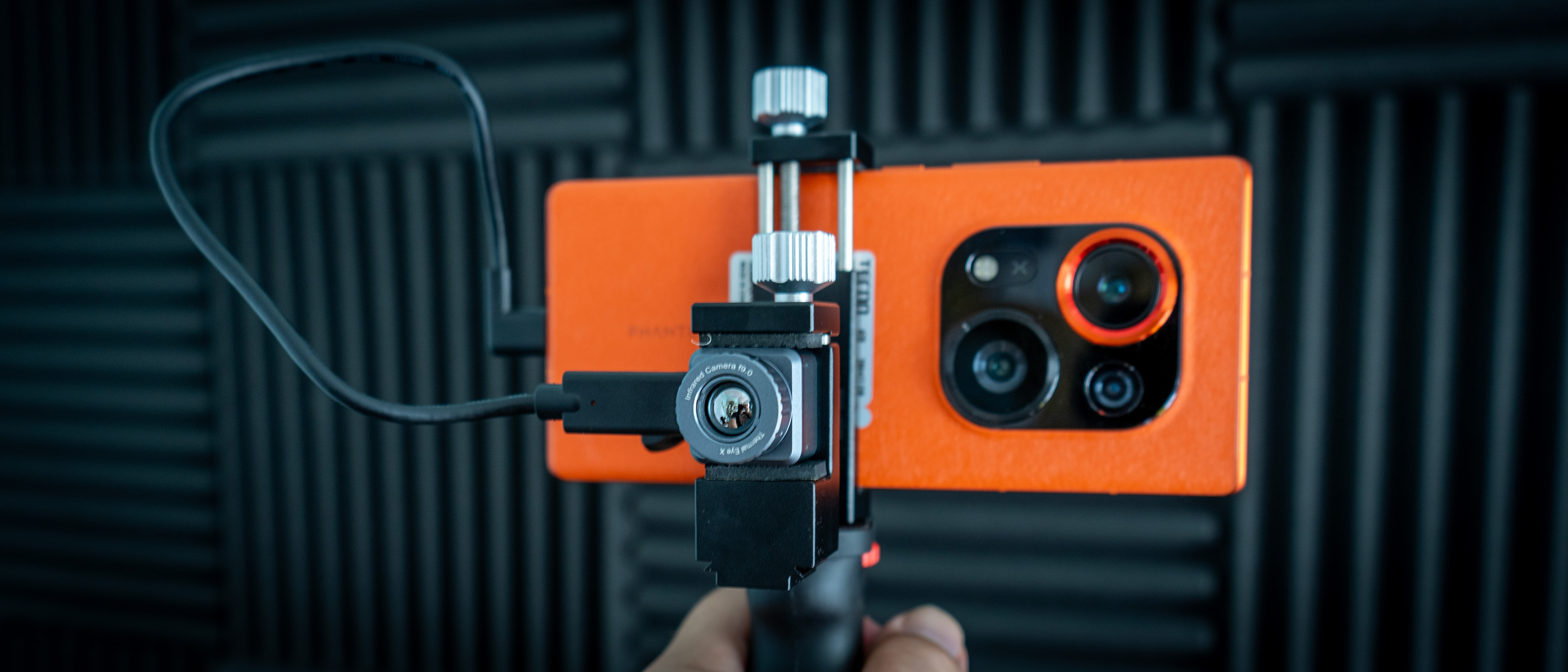Digital Camera World Verdict
These days there are a lot of tiny thermal cameras that plug into phones, but Xinfrared has done a good job of making this perfect for wildlife trackers and hunters, while still potentially having use around the home. The mount is a bit odd, but certainly versatile, and a phone-side heat scope helps find animals.
Pros
- +
Draws only 0.35W from your phone
- +
Pinch-zoom up to 15x
- +
Record video with good frame rate
- +
USB-C (Android) or Lightning (iPhone) versions
Cons
- -
Stuck with either Lightning or Android – no adapter
- -
Some kind of screen hood would be nice
Why you can trust Digital Camera World
Thermal monoculars are a great way to spot wildlife, whether you're tracking it or hunting it. Traditionally these have come in the form of a monocular or a gunsight, but the X2 is built around a small phone attachment and some accessories you can build to suit you.
Many DIY-ers have discovered the benefits of compact thermal cameras which work as phone attachments. Some are in our best thermal cameras list and their principal benefit for plumbing, motoring, or electronics work is their low cost. Now that price advantage is available for hunters – though Xinfrared has had to solve a few problems, hence the other accessories.
Just as this device might not appeal to devoted hunters with all the gear already and piles of money to spend, this is not only a great introduction to the possibilities of thermal imaging but even borrows some of the advantages the phone offers – recording, for example.

Specifications
Thermal resolution: 256x192
Zoom: 2x 15x
Frame Rate: 50Hz
Field of view: 19.6°
Detection range: approx 500m (551 yards) to discern a deer
Dimensions (IR Unit): 26 x 26 x 26 mm
Weight (IR Unit): 18.5g
Weight (in grip): 337g + phone

Key Features
As a small thermal camera that plugs into your phone and draws power from it, the X2 takes a different approach to a traditional monocular, but one that gives it a large screen and the ability to record high-frame-rate thermal video, and pinch-to-zoom (digital of course). It also boasts a much faster frame rate than traditional thermal cameras, so feels smooth and natural in use.
As well as the device itself, the X2 ships with a pistol grip that allows you to hold the phone screen at a good distance from your face and the monocular sensor steady. This reduces glare, which might give you away, and keeps a vital hand free. The app takes advantage of the phone's sensors to offer on-screen information including GPS location, compass direction, and temperature reading.
The device is offered with or without an extra night hunting shell for the camera.
Build and handling
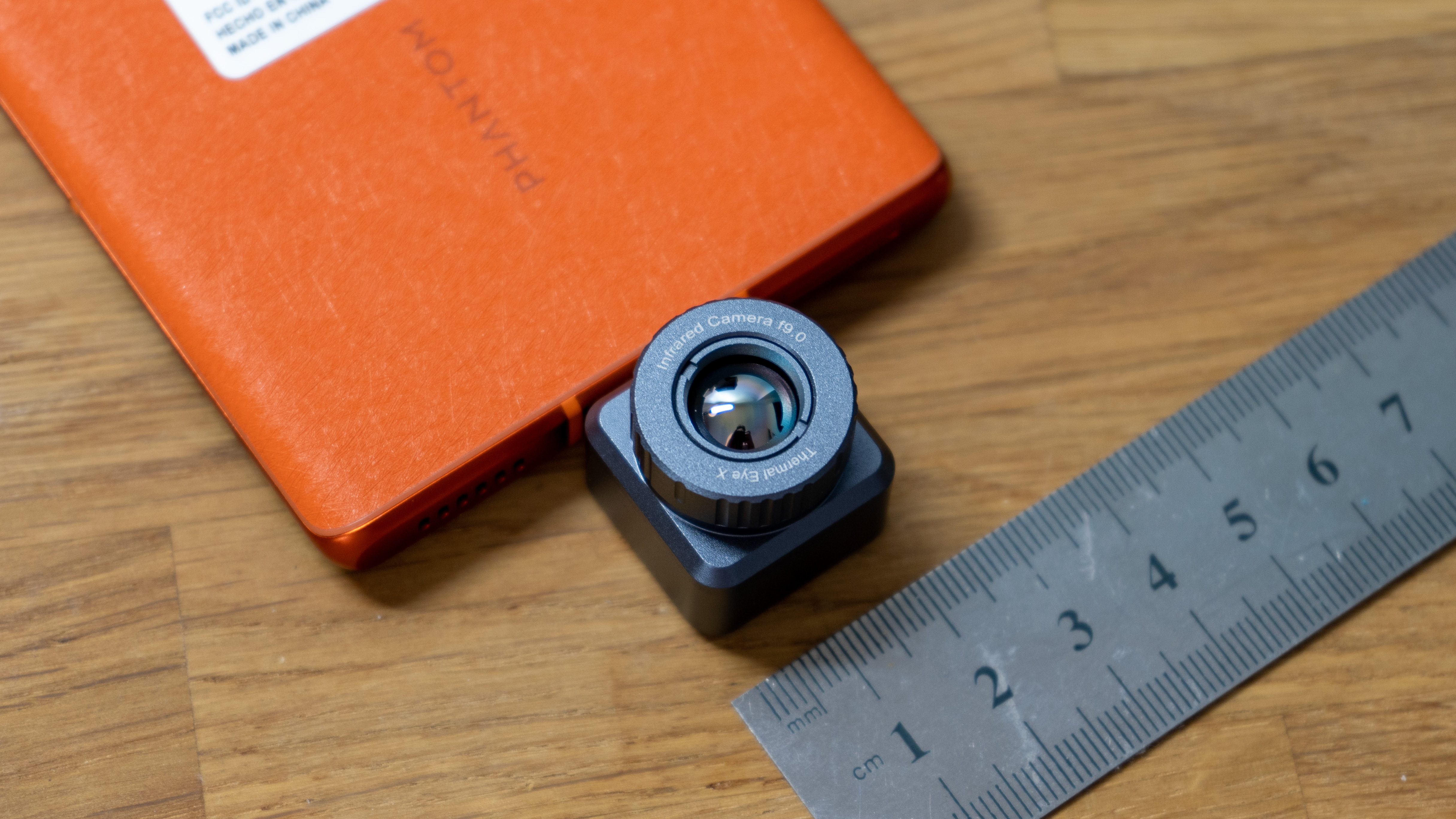
First, you discover a tiny camera in a top-quality zipped case with padding and an extension cable inside (very similar to the one with the Hikmicro Mini 2). A slight surprise to me was that the device was silver in appearance (somehow I'd imagined all black, marksman-style), with a bigger focus grip. No matter – if reflection is a real concern, a permanent marker could change that, and in the dark it is unlikely to be an issue.
Anyway, with no other accessories (which arrive in separate boxes), you can plug the device into your phone, download the app, and get going. Weirdly the image was upside-down and it took me a few moments to realize the settings would be needed to resolve this, but once I had, it became apparent how straightforward it was to fix.
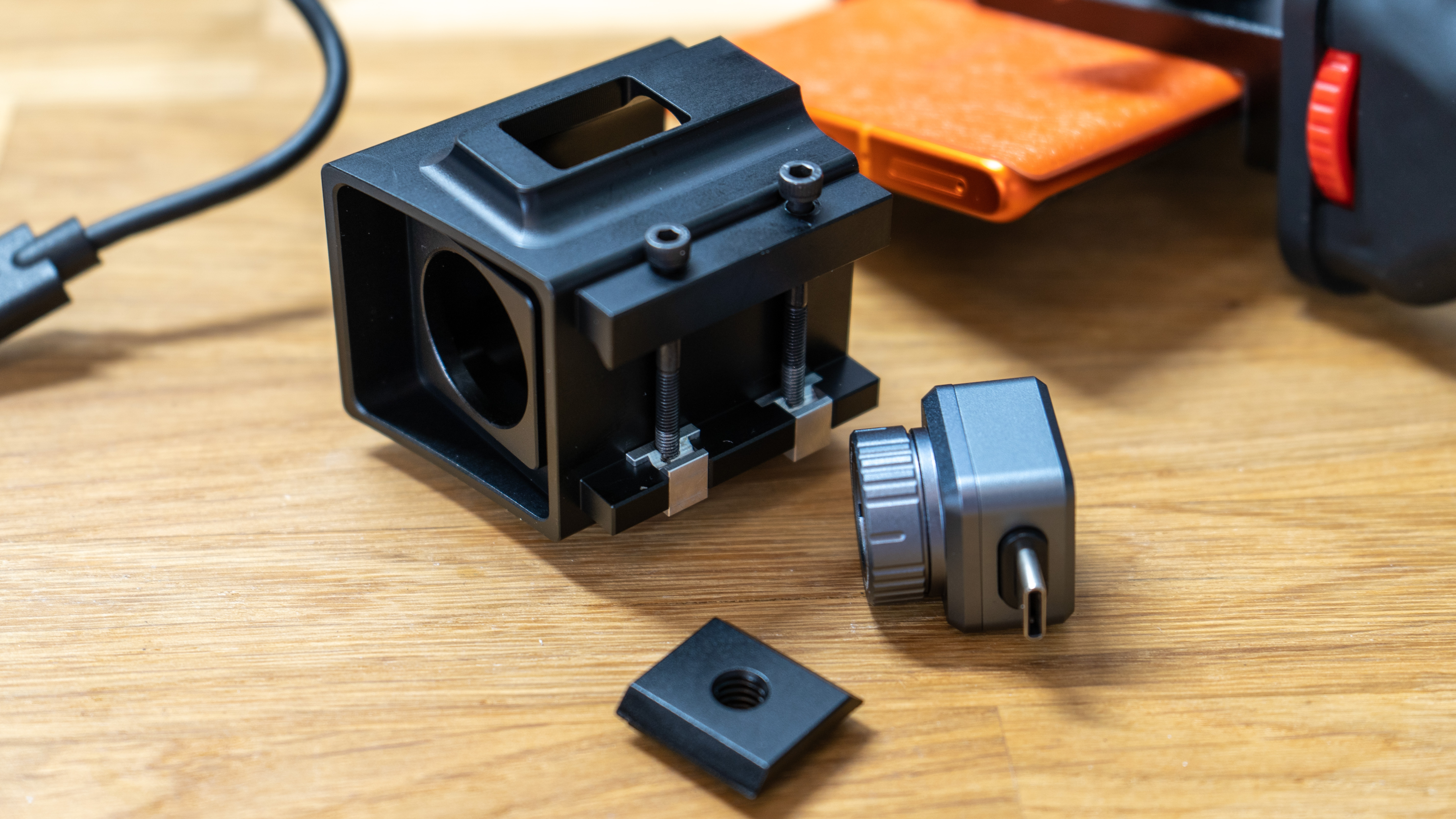
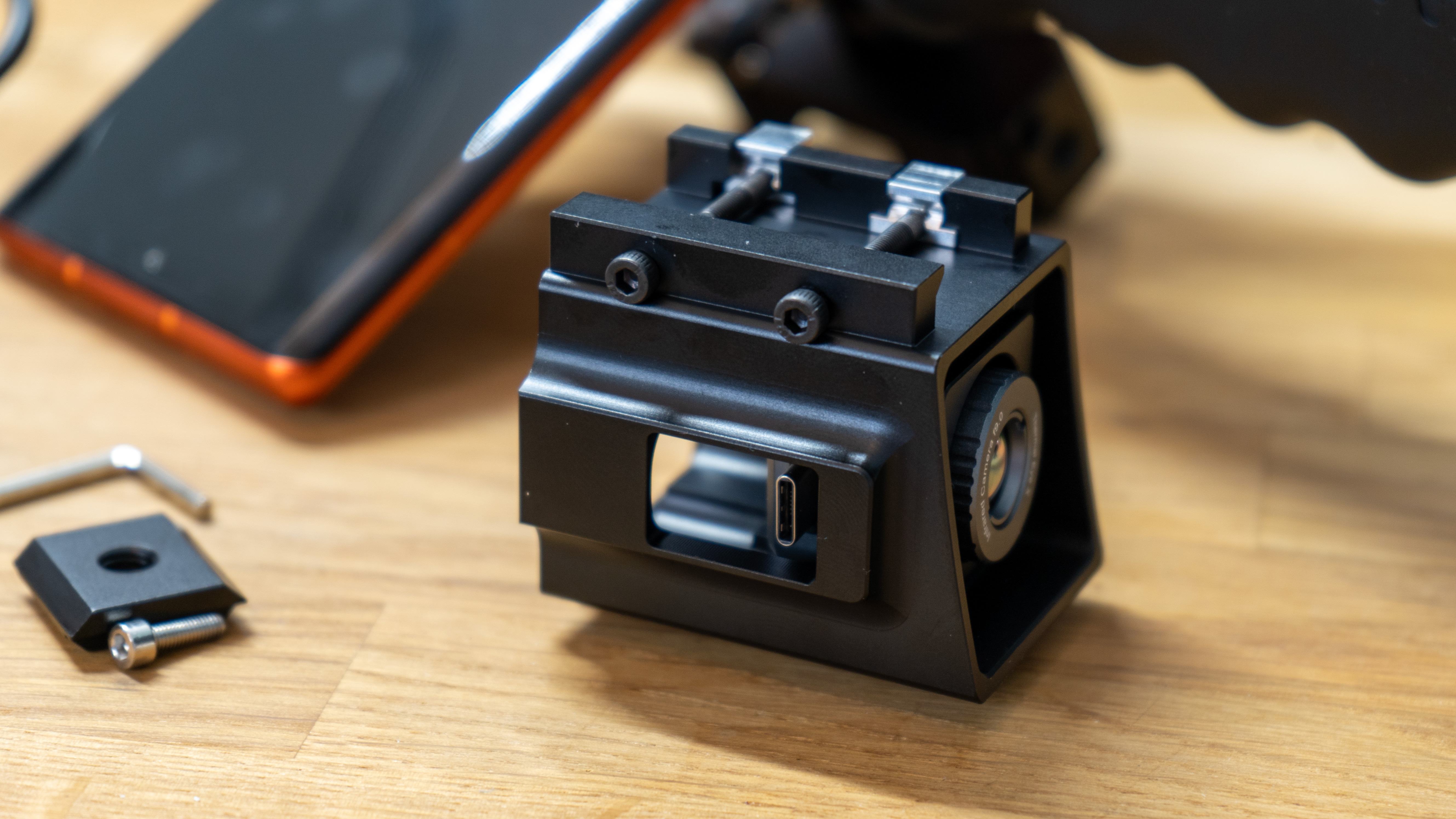
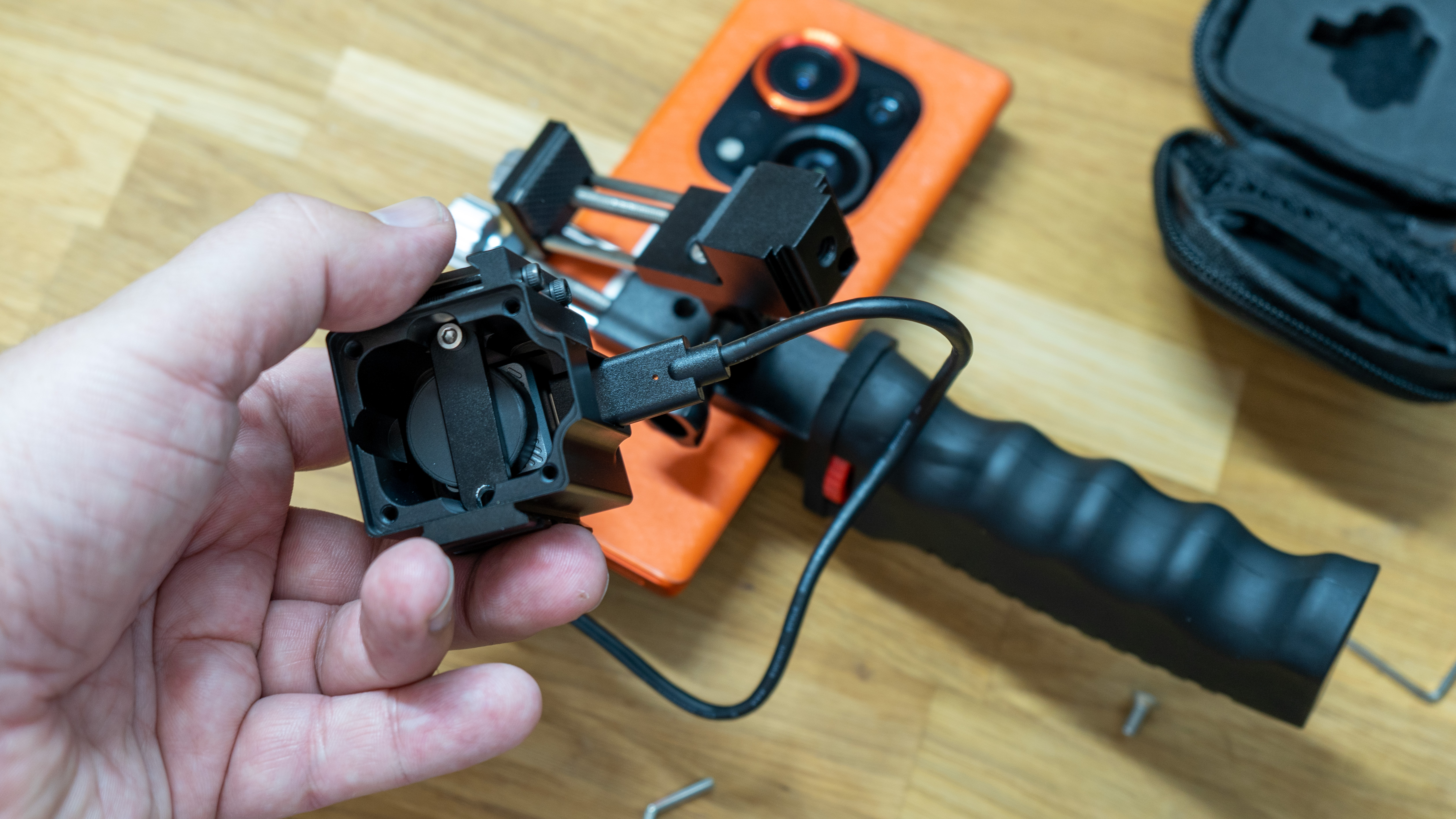
Next came the more frustrating stage; assembling the pistol grip in the manner pictured, not helped by the lack of documentation and the fact I was lucky (or unlucky) enough to also have the metal shell for night hunting. Thankfully the screw clamps to hold your phone in place, plus the extension cable to position the camera in the smaller clamp, were more self-explanatory than they looked. Only getting the compact thermal camera unit into the metal shell (if you opt for it), then clamping it is tricky because the camera is too small for the fittings provided. I opted to use the lens cap to fill the gap – a piece of pencil eraser might do better.
Despite some overall oddities, key elements seem well-considered. There is a tripod-style thread in the base of the plasticky but functional pistol grip, and, sure, screwing things together is a bit inelegant – but we're looking for function over form here.
Performance
The basic performance of the device is very good. The fact you can manually adjust the focus has a clear visual result as you set your distance, which shows just how
It is also easy to flick through the palettes. The two most useful seem to be the dark with red highlights for warm-enough-to-be-an-animal areas, and the classic thermal view, but there is also a special option for birdspotting.
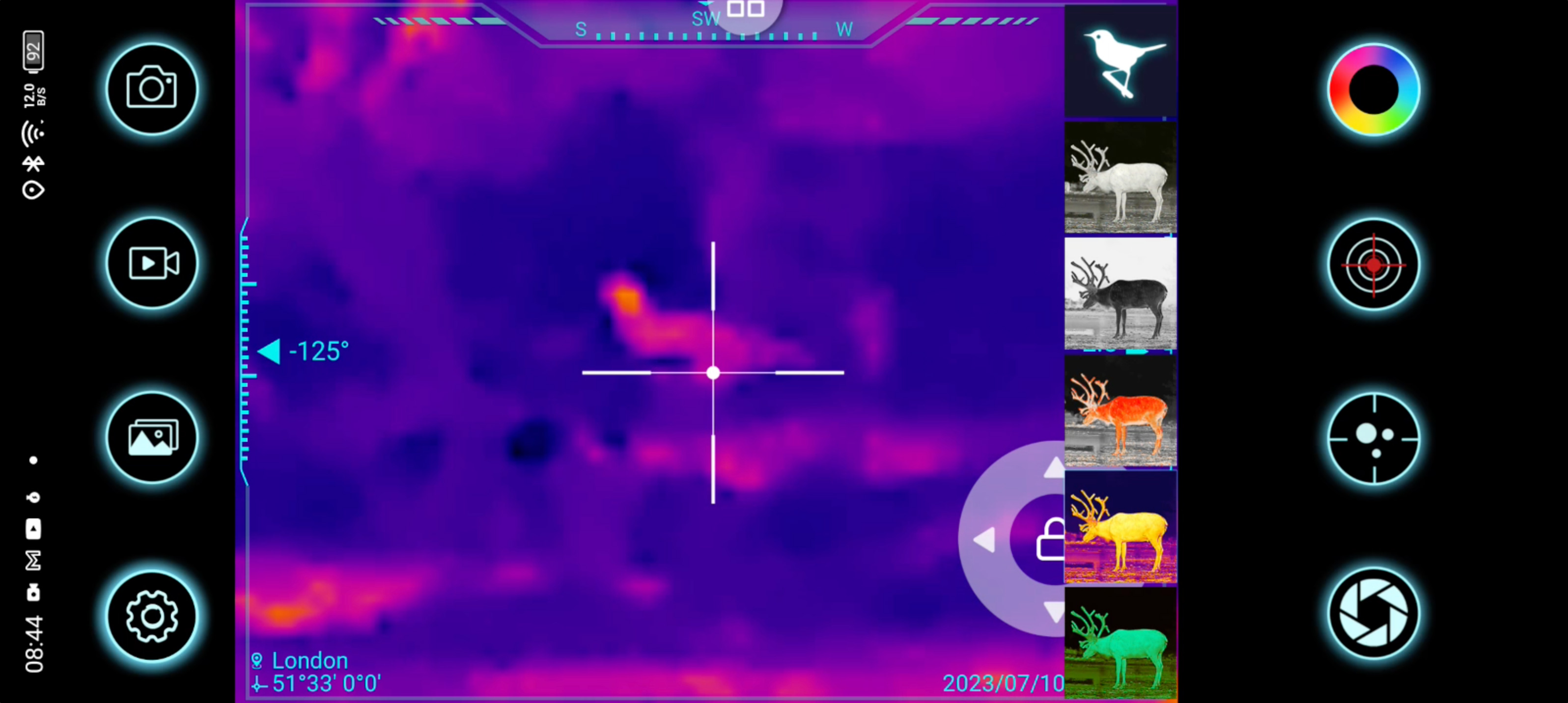
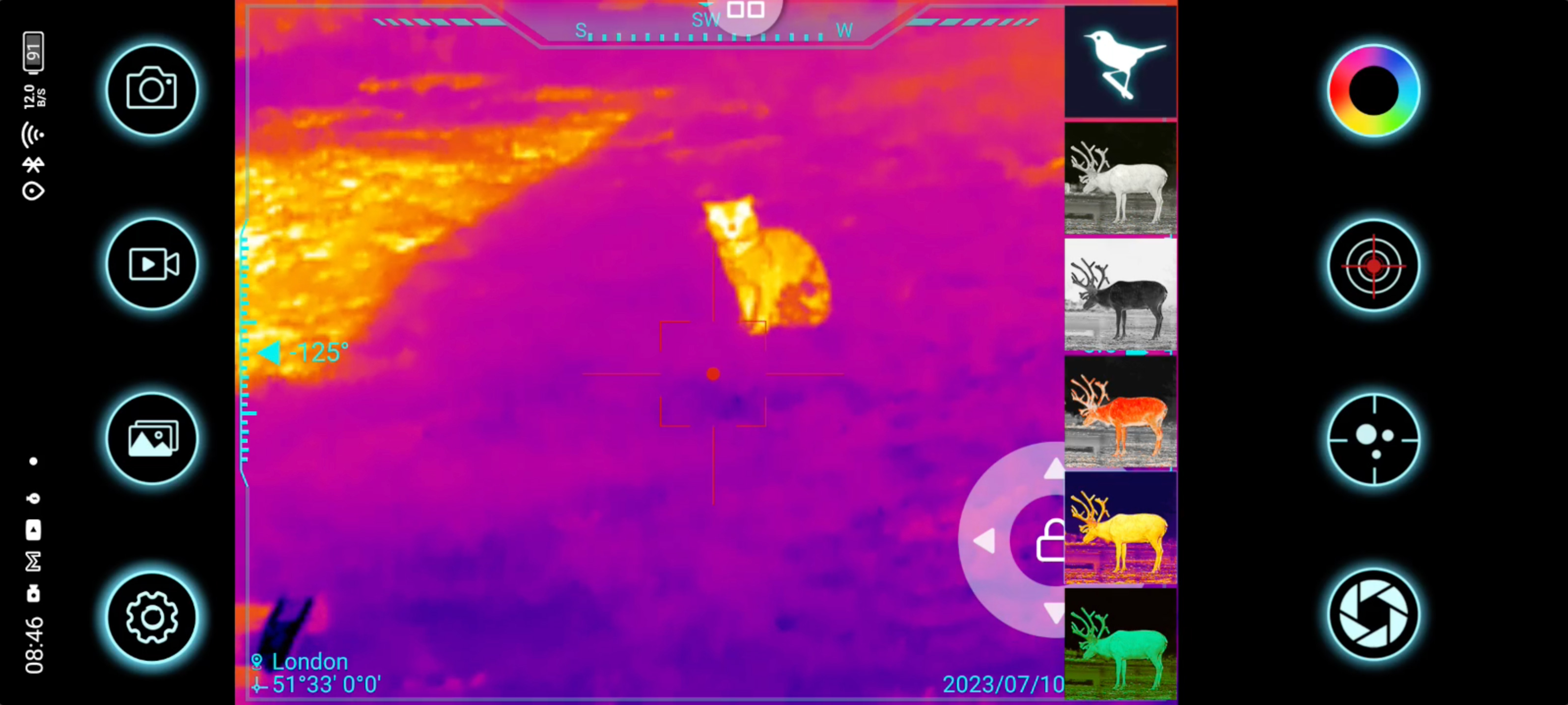
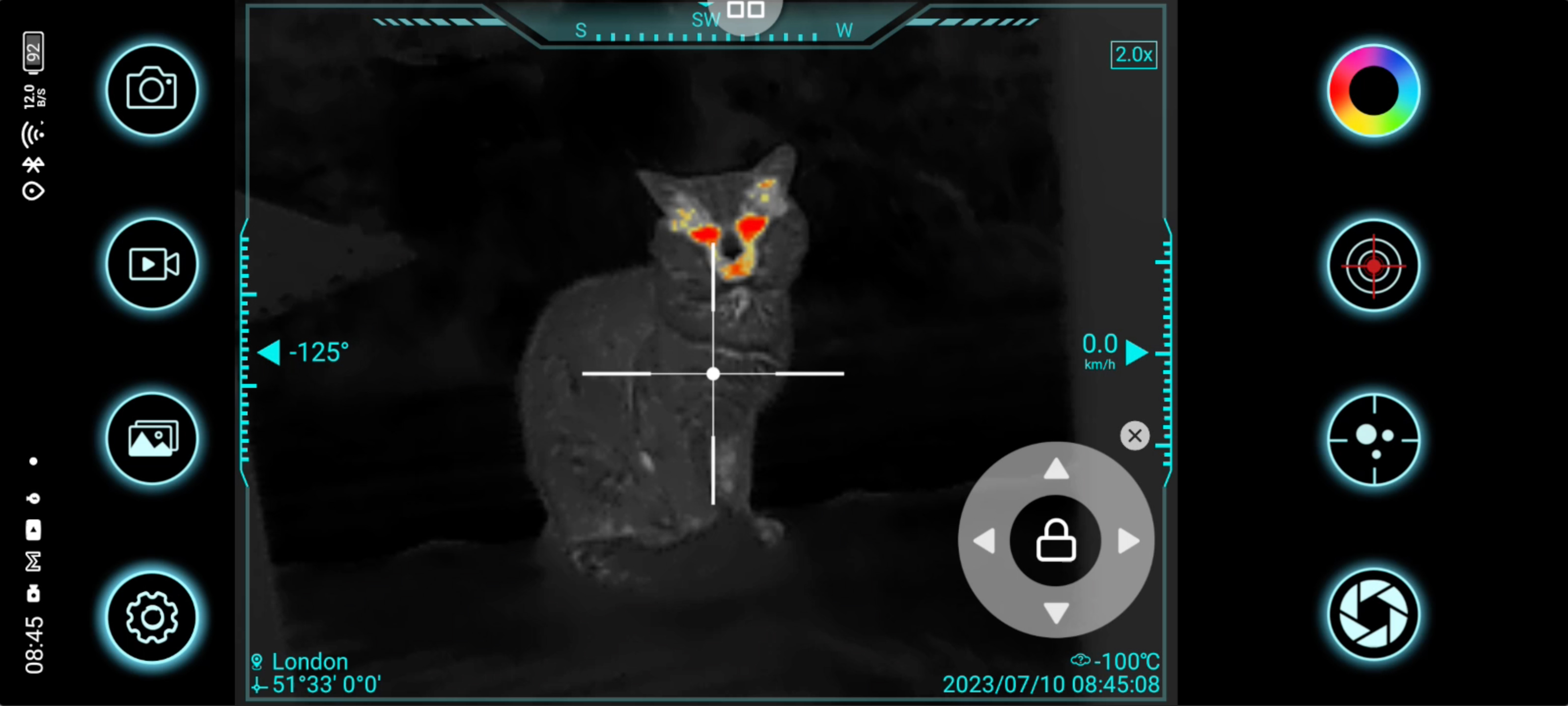
On the evidence of the animal visitors I was able to test on – largely foxes and cats – I can believe it's possible to, as the specs suggest, identify body warmth at up to 1300m (over 4,000ft). That said, means just a pixel or so, mind; it won't help you identify a smaller animal like a bird until it's within a few hundred meters. I did notice that pinch-zooming made no noise, and so didn't disturb even cautious wild foxes.
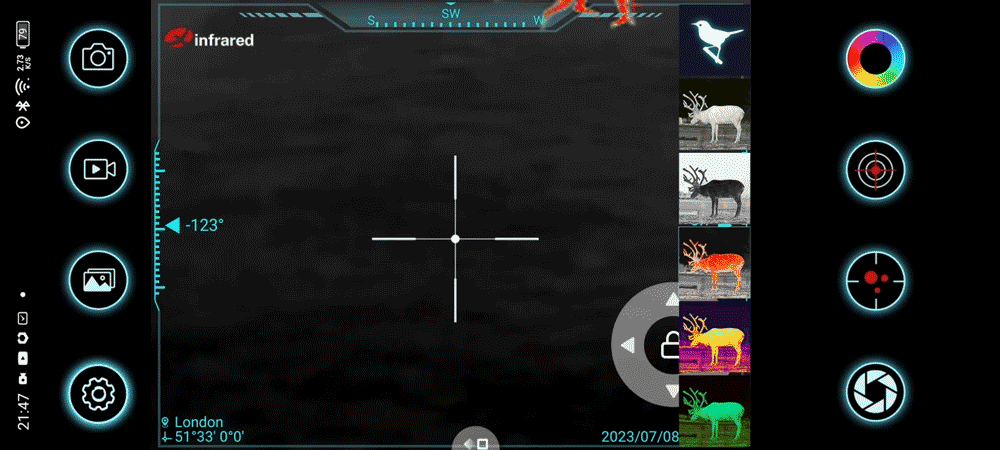
Whether the metal shell has any significant thermal properties (it does look a little like a heat sync), or just looks cool isn't entirely apparent. By keeping the thermal camera further from any heat radiating from the phone or me, it must help building is a pain – it is a poor piece of design, and I didn't see much benefit from in testing (admittedly in a temperate climate in summer), so I'd be inclined not to bother specifying it).
While not ideally suited because of the narrow field of view, it's worth noting that it could still be used for some in-home tasks (remembering to tweak the focus).
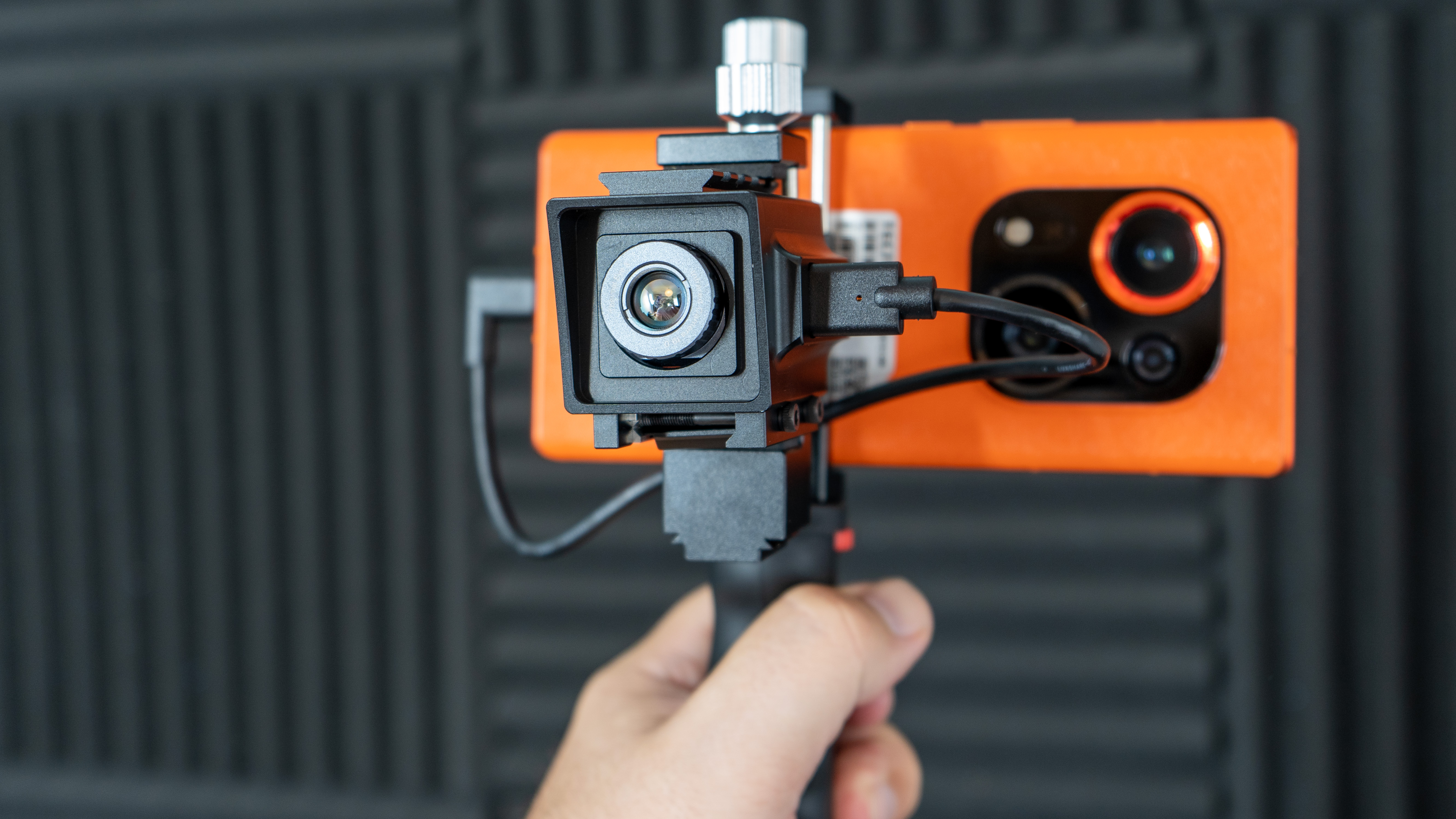
Final verdict
Unpacking this device will be quite a surprise if you're expecting a traditional monocular, but that doesn't make it any less useful. In fact, it has some real advantages – especially if you like to document what you're doing with above-average quality thermal video (perhaps you're making a Predator fan movie?)
I was in no way enamored with the night shell – even if it had been useful for me, it isn't a good piece of design; assembling and packing without it is quicker and no less functional.
There are some software features which seem to be there for limited reason; picture-in-picture was problematic for us as the cable from the camera obscured the phone's view, and you can swipe through far more cross-hair/gun-sight designs than anyone could need.
Overall, though, this seems to be a fine device which if you take the trouble to assemble – at least the first time – at home in decent lighting conditions you will find very useful in the dark. It certainly doesn't hurt that it comes in at well under half the price of some dedicated monoculars with similar image resolution. The smooth video is also the best I've seen on any thermal camera.

With over 20 years of expertise as a tech journalist, Adam brings a wealth of knowledge across a vast number of product categories, including timelapse cameras, home security cameras, NVR cameras, photography books, webcams, 3D printers and 3D scanners, borescopes, radar detectors… and, above all, drones.
Adam is our resident expert on all aspects of camera drones and drone photography, from buying guides on the best choices for aerial photographers of all ability levels to the latest rules and regulations on piloting drones.
He is the author of a number of books including The Complete Guide to Drones, The Smart Smart Home Handbook, 101 Tips for DSLR Video and The Drone Pilot's Handbook.
